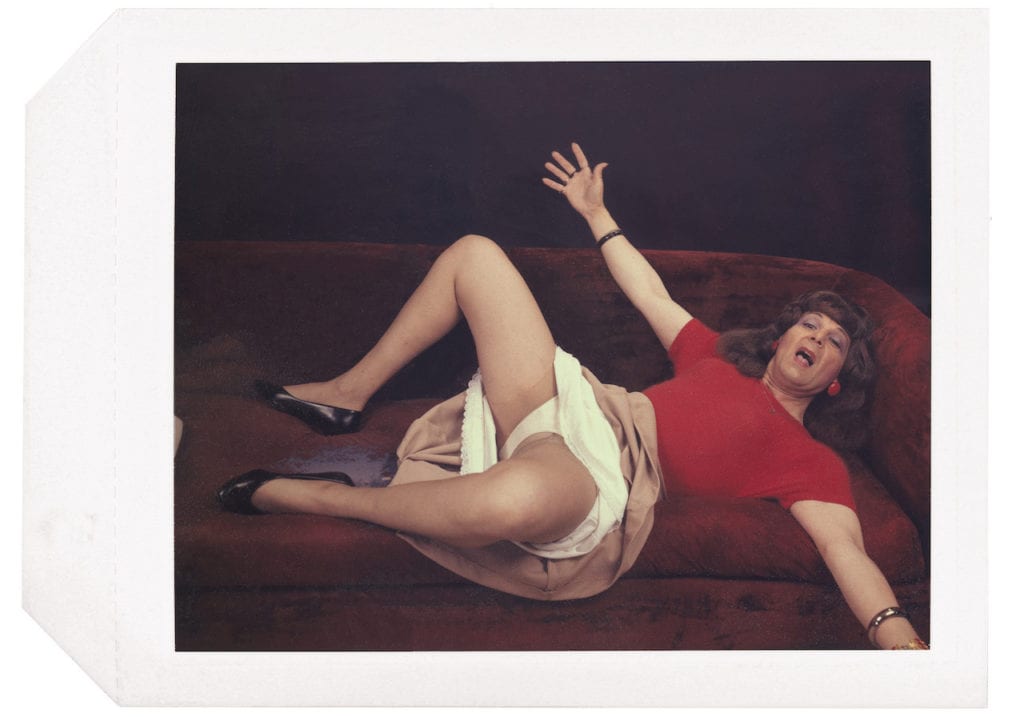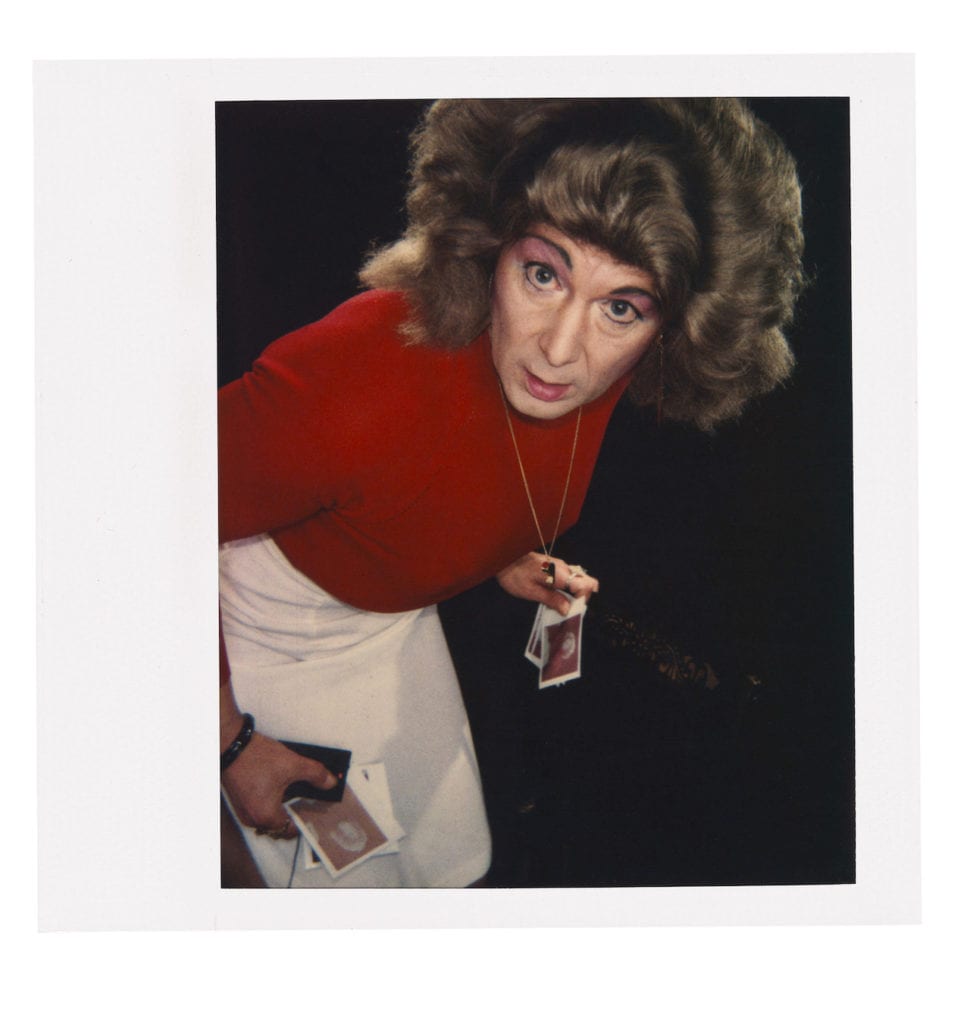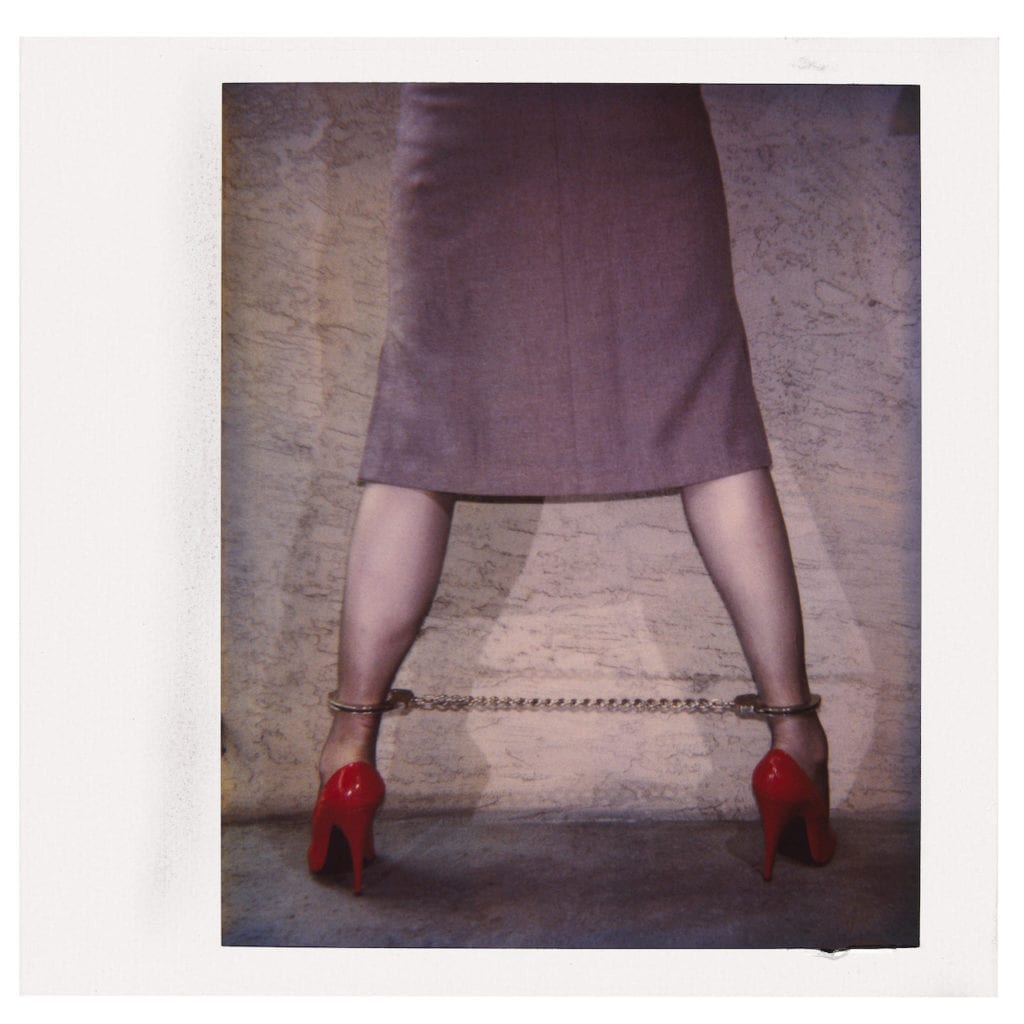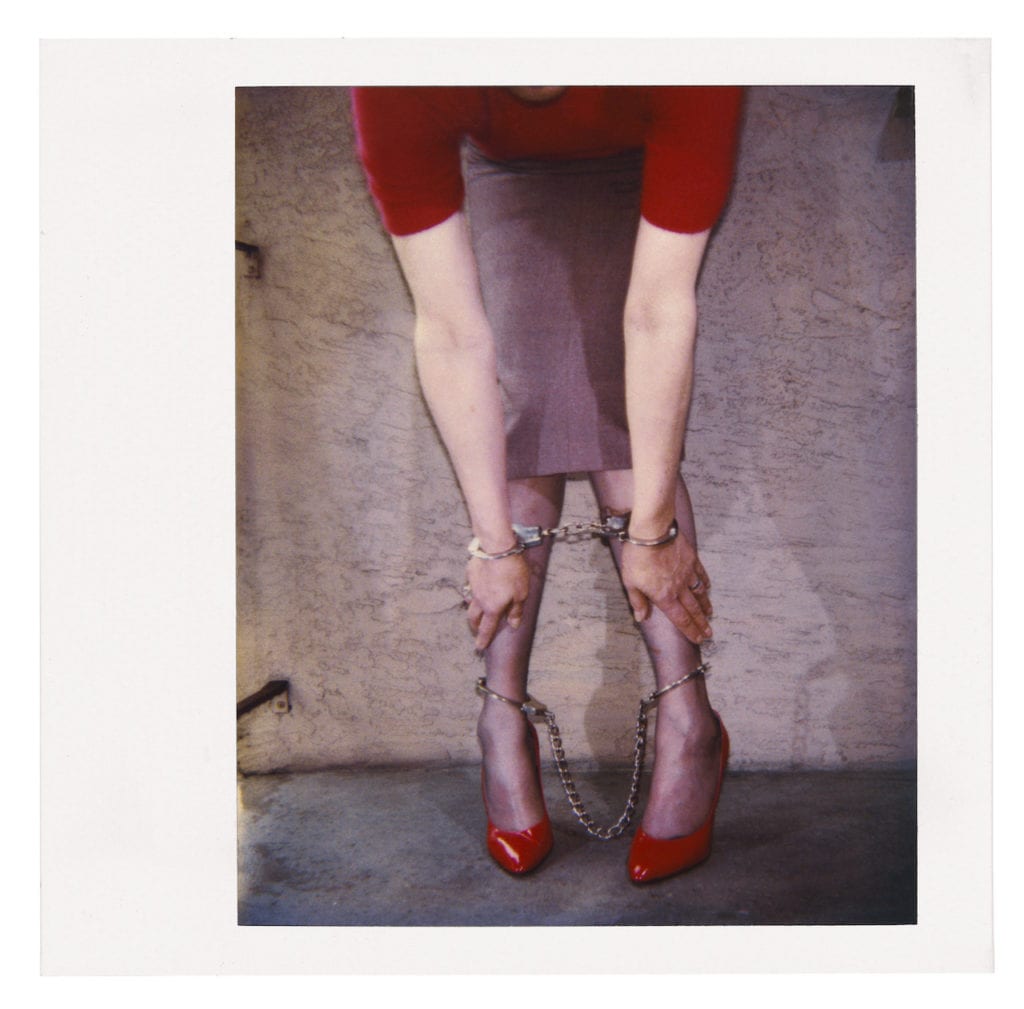April Dawn Alison was the female persona of Alan Schaefer – a photographer who lived his life as a man in Oakland, California. After his death in 2008, an estate liquidator was hired to sell the belongings left in Schaefer’s home, which is where he discovered 9,200 Polaroids made by, and of, Alison. Several years later the images were sold to Andrew Masullo, a local painter who donated the archive to the San Francisco Museum of Modern Art.
When associate curator of photography Erin O’Toole first saw the collection she immediately knew it was special. “I was so taken aback by the quality and quantity – the whole story,” she says. Now, over a decade after Alison’s death, a selection of the archive is published in a book by MACK, and exhibited in a solo show at SFMOMA.
From looking at Alison’s clothes and household items, O’Toole estimates that the photographs were made over a period of more than 30 years, beginning in the late 1960s. The posthumous publication of this work brings up many questions. An obvious one being whether Schaefer would have wanted the image to be found, and if he would be pleased to know they were on show to a global audience.
“I personally believe that [Schaefer] wanted them to be seen,” says O’Toole, who has consulted many artists about the work. Several of the people she spoke to expressed the same sentiment: “Artists don’t make work for no one to see it”. “Maybe he didn’t feel comfortable being April Dawn in the world, but that doesn’t mean he didn’t want people to see the pictures later and appreciate them,” says O’Toole.

With a trove of 9,200 images to work with, Alison’s archive is O’Toole’s largest curatorial project to date. “It was daunting, it took many, many months,” she says. “The polaroids were organised into series, many inspired by characters in films, models in magazines, or BDSM and pornography films.” O’Toole’s process was to label each of the series that she found interesting. She would then select the images that she felt best represented that particular shoot.
When making her selection, O’Toole was also conscious of communicating the sheer number of images in Alison’s collection. “If you don’t see lots of pictures, you lose the sense of the body of work,” she says. “But you also don’t want to overwhelm people – striking that balance was crucial.”
“It is a way of seeing yourself as you believe yourself to be, or as you may not be in the world yet”
Erin O’Toole

Considering Schaefer was a professional photographer, with an extensive collection of equipment that often appears in the background of the photographs, it is significant that she chose to use Polaroids. Whether she knew about Andy Warhol, or Wim Wender’s use of the medium is a mystery, but the immediacy of the format makes it ideal for private photographs.
In one of the three essays published in the book, artist and transgender advocate Zackary Drucker writes: “April Dawn Alison and I are part of a long tradition of trans people using photography to construct identities … We are not unique. We just happened to break into more visible arenas, whether by choice or by postmortem discovery”.
“It is a way of seeing yourself as you believe yourself to be, or as you may not be in the world yet,” explains O’Toole, who gained valuable insights about Alison’s images through speaking with Drucker, and also Susan Stryker, professor of gender and women’s studies at the University of Arizona.
For Stryker, it was no surprise to learn that these images existed, but when she saw them, she was blown away by the standard. “For me it also comes down to the fact that these are great photographs,” says O’Toole. “The content is important, but it’s the marriage of the content and form that makes them so exemplary.”

Still, one cannot help but question what Alan Schaefer’s life and artistic career may have been, had he felt confident or safe enough to step out into the world as April Dawn Alison. O’Toole hopes that the exhibition will raise visibility of the transgender community, who do not see themselves represented in the media and in museums. She also hopes that it will resonate with people who are not part of this community: “I hope that they will see this person in their full humanity, expressing themselves, and for them to feel comfortable with it and see the beauty in it”.
April Dawn Alison is edited by Erin O’Toole and published by MACK. An exhibition of the work is currently on show at the San Francisco Museum of Modern Art until 01 December 2019.


